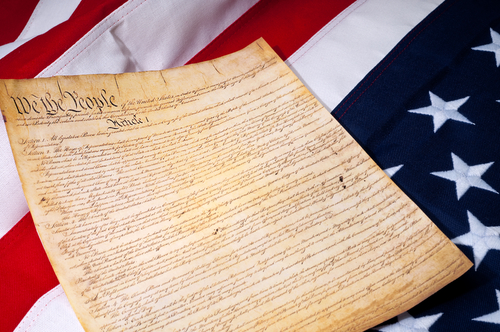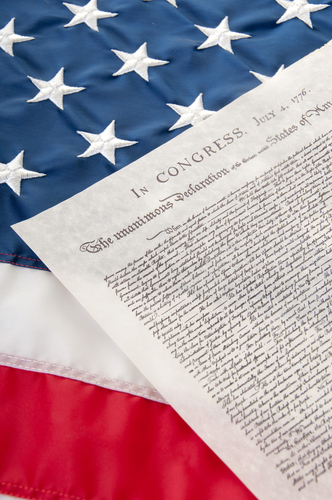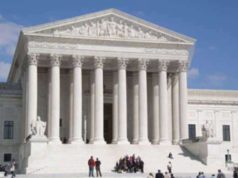Table of Contents

9th Amendment Overview
The 9th Amendment of the United States Constitution is one of the most overlooked and understudied amendments in the document. However, it is a vital amendment that is responsible for protecting individual rights and limiting the powers of the federal government. The amendment itself is very brief, yet its impact on American society has been profound. This article will explore what the 9th Amendment is, and how it has influenced the United States throughout history.
The 9th Amendment states: “The enumeration in the Constitution, of certain rights, shall not be construed to deny or disparage others retained by the people.” The language of the amendment is somewhat cryptic, but it essentially means that the Constitution does not contain an exhaustive list of all rights and liberties that American citizens have. Instead, it recognizes that there are other rights that are not explicitly mentioned but are still held by the people.
The 9th Amendment was proposed as part of the Bill of Rights, which was added to the Constitution in 1791, two years after the Constitution was adopted. The framers of the Constitution believed that a Bill of Rights was necessary to protect individual liberties and prevent the government from abusing its power. The 9th Amendment was included to ensure that the Bill of Rights was not interpreted as a complete list of rights granted to Americans, but as a starting point for protecting liberty.
The amendment was primarily authored by James Madison, who was one of the primary architects of the Constitution. Madison understood that the enumerated rights in the Constitution were just a starting point for individual liberties. He recognized that there were other rights that were not mentioned but were still essential to American citizens’ lives. Therefore, he proposed the 9th Amendment to protect these rights and ensure that they were not overlooked or disregarded.
Critical Points of the 9th Amendment
One critical aspect of the 9th Amendment is that it implies that the Constitution is a living document. The amendment recognizes that the Constitution must adapt to changing times and circumstances. Therefore, it allows for the protection of rights not explicitly mentioned in the Constitution.
The 9th Amendment has been a crucial legal principle used to expand and protect individual rights. Since it was incorporated into the Constitution, courts have used the amendment to expand on privacy and liberty rights, which are not enumerated in the Constitution. One famous case, Griswold v. Connecticut, used the 9th Amendment to establish a right to privacy. The Court used the amendment to argue that the right to privacy was an essential component of personal liberty and that it was protected under the 9th Amendment.
The 9th Amendment has also been used to strike down laws that restrict individual liberty. In Lawrence v. Texas, the Supreme Court used the amendment to overturn a Texas statute that criminalized sodomy. The Court held that the statute violated the 9th Amendment by intruding into the private lives of individuals. The amendment amplified the individual’s liberty interest over the state’s interest in regulating private behavior.
Another way the 9th Amendment has influenced the United States is by reinforcing the idea that the Constitution is a limited government document. The amendment strengthens the position that the federal government cannot expand its power beyond what is stated explicitly in the Constitution. The 9th Amendment recognizes that the people hold rights beyond those specifically listed in the Constitution. Still, it also means that the government has the constitutional duty to protect those rights.
The 9th Amendment has also played a role in limiting the powers of the federal government. It recognizes that certain powers, such as the power to regulate certain aspects of healthcare and education, are not explicitly granted to the federal government. Therefore, these powers are reserved for the states or the people.
The amendment has also played a role in the growth of federalism in the United States. Federalism is the idea that power should be shared between the federal government and the states. The 9th Amendment, by recognizing that there are rights held by the people, affirms the role of the states in protecting these rights. This idea has been used as an argument for states claiming the right to enact policies not specifically enumerated in the Constitution.
The 9th Amendment has been a source of controversy throughout American history. Its broad language has been interpreted in many ways, leading to a range of views on its role in American society. Some scholars and judges argue that the amendment is a mere tautology – that it merely restates the obvious – and that it is of little practical significance. Others believe that the amendment is an essential tool for the judiciary to protect unenumerated rights.
Conclusion
Despite the different interpretations, a general consensus has developed that the 9th Amendment guarantees individual and unenumerated rights that the government must protect. It also affirms the role of the states in protecting these rights and reinforces the idea that the Constitution is a living document.
In conclusion, the 9th Amendment is a vital component of the United States Constitution. It has played a crucial role in protecting individual rights, limiting the power of the federal government, and reinforcing federalism. Its language is broad and has been interpreted in various ways, but its influence on American society has been profound. The 9th Amendment serves as a reminder that the Constitution can evolve to protect the rights of citizens, regardless of whether they are explicitly stated.
Ninth Amendment: Rights of the people that are not specifically enumerated in the United States Constitution.
What is the Ninth Amendment?
The enumeration in the Constitution of certain rights shall not be construed to deny or disparage others retained by the people.
The Ninth Amendment Defined:
The Ninth Amendment is a part of the Bill of Rights, which are the first 10 Amendments to the United States Constitution and the framework to elucidate upon the freedoms of the individual. The Bill of rights were proposed and sent to the states by the first session of the First Congress. They were later ratified on December 15, 1791.
The first 10 Amendments to the United States Constitution were introduced by James Madison as a series of legislative articles and came into effect as Constitutional Amendments following the process of ratification by three-fourths of the States on December 15, 1791.
Stipulations of the Ninth Amendment:
The Ninth Amendment is regarded by the court system of the United States as negating any expansion of government authority on account of the rights expressed in the United States Constitution. That being said, the Amendment is not regarded as further limiting governmental power.
Amendments one through eight of the United States Constitution address the limits and means by which the federal government can exercise its awarded powers, while the Ninth Amendment creates sediment of rights that are not awarded to the government.
Supreme Court Cases tied into the 9th Amendment
In Barron v. Baltimore the Supreme Court states that the provisions outlined in the Ninth Amendment were only enforceable by the federal court system against the federal government and not allowable against any state body. As a result, the Ninth Amendment is only applicable to the federal government, which by definition, is a government of enumerated powers. That being said, some jurists have viewed that the ninth Amendment is relevant for interpretation in regards to the Fourteenth Amendment. Some jurists believe that the Ninth Amendment was created to constitute an independent source of undeniable rights that are protected from infringement by either the States or the Federal Government.
State Timeline for Ratification of the Bill of Rights
New Jersey: November 20, 1789; rejected article II
Maryland: December 19, 1789; approved all
North Carolina: December 22, 1789; approved all
South Carolina: January 19, 1790; approved all
New Hampshire: January 25, 1790; rejected article II
Delaware: January 28, 1790; rejected article I
New York: February 27, 1790; rejected article II
Pennsylvania: March 10, 1790; rejected article II
Rhode Island: June 7, 1790; rejected article II
Vermont: November 3, 1791; approved all
Virginia: December 15, 1791; approved all
Georgia, Massachusetts, and Connecticut did not ratify the first 10 Amendments until 1939


























